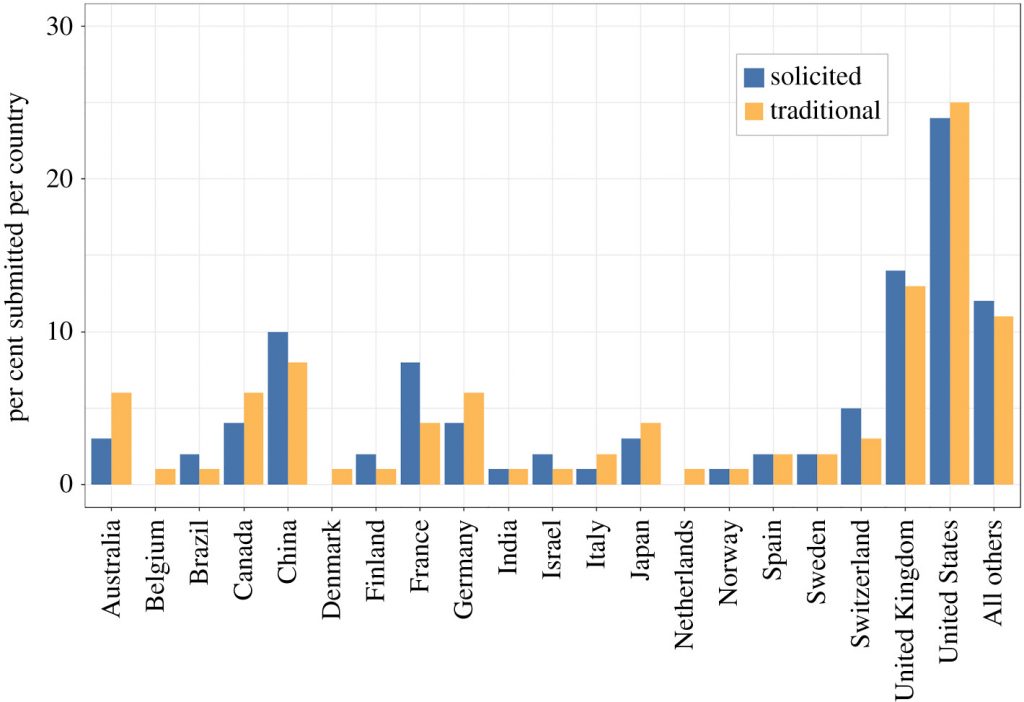Post by Anna Drangowska-Way
Whether a preprint will get noticed depends on many factors. Ideally, the quality or the relevance of its scientific findings will be of primary importance, but this is not always the case.
There are many disparities in how preprints (and science in general) get attention. One of the most obvious of these disparities is that manuscripts from large and well-known institutions or labs will draw more attention. Another prominent example is the disparities in which geographical regions produce and disseminate scientific output, with North America, Western Europe, and a few Asian countries contributing more than their population share of scientific publications. It’s important to discuss how to overcome these and other biases, how preprints can democratize science’s dissemination, and whether preprints can evolve in a way that enables all communities to participate.
To address this issue, on 25 August 2022, ASAPbio hosted a Community Call where we discussed ‘‘Promoting equity in visibility, curation, and evaluation of preprints.’ The speakers included Bianca Kramer from Sesame Open Science and Maurine Neiman from the University of Iowa.
Our first speaker, Bianca Kramer, covered the topic of “Preprint discoverability coverage, indexing, and implications for engagement” (slides can be found here). Bianca first discussed research she completed with Nicholas Fraser regarding COVID-19 preprints. In her presentation, she then focused on work carried out together with Jeroen Bosman on how preprints are indexed and how they can be found using freely accessible search engines like Google Scholar, Europe PMC, Dimensions, and others. While many preprints can be found using those tools, some are still not findable. To ameliorate this issue, it is important for preprints to have a Digital Object Identifier (DOI) and complete metadata. It is also essential for those searching for preprints to have information literacy and be aware of the preprint landscape. A good suggestion for improvement, for example, is to not limit oneself to only the most popular preprint servers or to only one search engine, as this strategy will only increase bias as to which information one will access.
Such bias in the visibility of preprints was evident during the COVID-19 pandemic. Bianca brought up an eye-opening observation. While preprints reporting COVID-19 research were posted in many different preprint repositories, over 80% of mentions to preprints in the media were for preprints posted on medRxiv and bioRxiv, creating a bias to what science was covered in venues most accessible to the public.
The next speaker, Maurine Neiman from the University of Iowa, discussed her work as Preprint Editor for the journal Proceedings B and explored the topic of “Equitably soliciting preprints for journal submission: Challenges & Opportunities.” In her talk (slides here) , Maurine discussed the pipeline Proceedings B uses to scout preprints and invite the authors to submit manuscripts to the journal. The process involves ~200 early-career researchers who search through bioRxiv to identify preprints that can be a good fit for Proceedings B, creating monthly recommendations, which Maurine reviews. Authors of selected preprints receive an invitation to submit their work to the journal.
Maurine discussed the challenges the journal faced when trying to build equity in the solicitation process. Even though the journal aims to increase the diversity (including geographical diversity) of papers published in Proceedings B, the analyses by her and her colleagues show that the majority of articles published in Proceedings B are still from countries like the USA and the UK. However, the journal is actively working to address this challenge. Maurine, Daniel Bolnick (University of Connecticut) and David Fisher (University of Aberdeen) wrote a broader blog post on the topic that also discussed potential solutions. In a nutshell, to address disparities in the geographical representation of authors among published manuscripts, the journal recruits a diverse pool of preprint “scouts” and trains the scouts to identify and avoid common biases such as looking more favorably at manuscripts from famous scientists’ labs. Maurine also brought up a significant bias that many people exhibit, that is judging the paper by the quality of the author’s command of English, as some papers may be rejected solely based on the quality of language and not the quality of the research presented. Proceedings B is trying to be mindful of these and related issues and keeping this bias in their mind while reviewing papers.

While unequal dissemination of research is a global problem, it is essential to recognize this challenge and take action to combat it so that scientific contributions across regions, disciplines, and communities can be adequately recognized. It is also very important for preprints not to perpetuate existing inequalities in the science communication and publication system, so discussions around decreasing biases and inequalities in disseminating science should be happening more frequently, and thoughtful and deliberate steps taken toward improvement.
We realize that bringing equity will require many conversations but we hope that the discussion at our Community Call provided a number of concrete steps to help each of us increase the diversity of preprints we find and evaluate.








